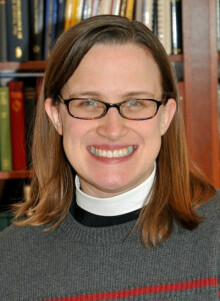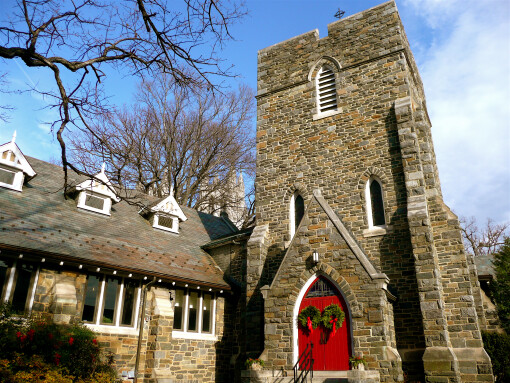The Rest of the Story

Series: Lent
Speaker: The Rev'd Emily Griffin
Sermon – The Rest of the Story
St. Alban’s, DC – 2/28/21
Psalm 22:22-30 (BCP), Mark 8:31-38
He knows how it ends. Jesus, that is. Judging from the portion of Psalm 22 we just heard, with its call to praise reaching across space and time, from the dust of the grave to children yet unborn, you’d never guess how it starts. But Jesus knew. He knew the psalms like Christians know the Lord’s Prayer or the lyrics to “Amazing Grace.” After a lifetime in the synagogue as a faithful Jew, he likely could quote the psalms like we quote our favorite movies. Lines showed up in his conversations. They came unbidden – like the sayings of our grandmothers, with a wisdom we perhaps haven’t fully realized yet. So, in the moment when suffering had taken away everything else and the well had run dry, he used the words he had. In this Gospel anyway, Jesus quotes the opening line of today’s psalm on the cross: “My God, my God, why have you forsaken me?” They’re his last words, in fact. So how can a psalm that starts with loneliness, grief and pain turn like this with the words we have today, with a chorus of praise that rings through eternity? Maybe Jesus can get from here to there, but can we?
If there is a legitimate path from suffering to joy, from the seemingly endless body count of today to new life tomorrow, who better to help us find it than Jesus? And what better time than Lent? In today’s Gospel, Jesus finally speaks plainly about what’s going to happen to him. No secrets, no parables this time. For once, he’s clear. In just a few weeks, he is going to suffer, be rejected and killed by people who should know better. Only after that will he rise.
Peter and the others are no more prepared for this buzzkill than we would be. So far, they’ve only seen their ideal, their superhero Jesus – the one who heals diseases and stills storms and outwits everybody. He’s been smart and tough and powerful. Who wouldn’t want to follow him? They thought they were backing a winner who’d help them get their country back and gain the world, and yet here he turns and all but guarantees suffering and loss as the path to new life.
There are different kinds of loss, of course. Sometimes a short-term loss is just good strategy. We’re willing to forfeit a game when we have the rest of the season to make it up. We might even throw a fight or lose a battle as long as we know we can still win the war. That’s not what Jesus is talking about here. Human life is too precious to play with like that. Besides, he knows that the kingdom he’s bringing turns everything upside down. When he takes violence and greed and shame off the table from being used as weapons, what do the religious and political authorities have left? If health and wealth and education really don’t make us better than our neighbors, then how do we justify the disparities between us? If admission to the kingdom of God isn’t merit-based, then how do we prove our worth? When we can’t measure our success against others’ failures, the value of our achievements, our existence, comes into question. Jesus knew that removing our goalposts of value and strength and insisting on the equal value of every human life would eventually get him killed, but he stayed on the path anyway. Why? Because once we realize what doesn’t matter, we have a chance of living into what does.
It’s a scary invitation, to lose what we think of as our life and identity for the sake of unconditional love, to deny ourselves center stage, but at least in this case we know what we’re losing. The alternative is even more frightening. Or as Jesus puts it in the King James Version: “For what shall it profit a man, if he gain the whole world, and lose his own soul?” The version we have talks about “forfeiting” our lives, but that implies that we know what we’re giving up.
In our focus on gaining the world and proving our value, in measuring our worth by the suffering we’ve avoided, we could lose our souls and not even know it. And what kind of life is that?
We’ll have plenty of time in the next several weeks to think about a life that is worth living, even in the face of death. We’ll consider the costs of living with integrity, of taking up our cross and being willing to suffer and grieve and love in solidarity with fellow children of God. But in the meantime, my original questions remain: Is there a path from suffering to joy that we can actually follow? If so, how do we get from here to there? I’m not sure we can answer these questions fully on this side of Easter. We may need to lose what we think of as our lives for a while in order to find them, and the only way I know how to do that is to follow Jesus.
Perhaps a clue can be found in the psalm we started with. In it we hear, “For God does not despise or abhor the poor in their poverty; neither does he hide his face from them; but when they cry to him, he hears them.” Perhaps that is how Jesus was able to cry “My God, my God” when every indication was that there was no God to cry to. A lifetime of praying this psalm in its fullness gave him hope that the truth was bigger than his feelings, that even his most hopeless cries could be heard. After all, he knows how this psalm ends – even if he can’t say it or even see it from the cross. When there’s not a way out, there is a way through – and because of the cross, we don’t have to face a single moment of it alone. In the Name of the One whose love reaches across space and time, from the dust of the grave to children yet unborn, Amen.
 Welcome to St. Alban’s Church! Every Sunday, and most days in between, people gather in this place to worship, to learn, to grow, to share the joys and struggles of our lives, and to seek God’s grace in the midst of our lives. We do not come because we have it all figured out, but because we are seeking light on the way. We come as we are and welcome one another.
Welcome to St. Alban’s Church! Every Sunday, and most days in between, people gather in this place to worship, to learn, to grow, to share the joys and struggles of our lives, and to seek God’s grace in the midst of our lives. We do not come because we have it all figured out, but because we are seeking light on the way. We come as we are and welcome one another.

